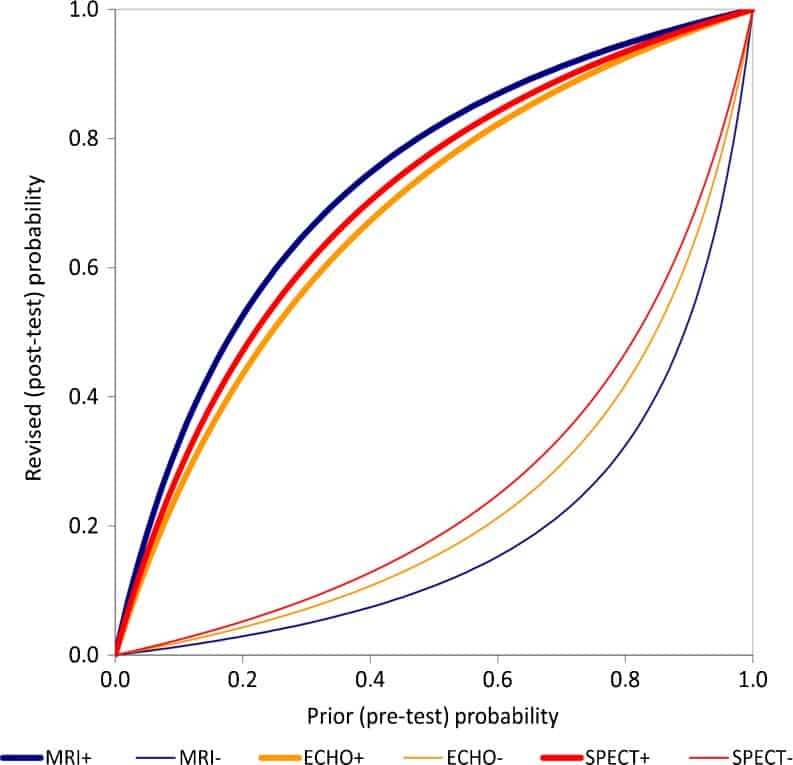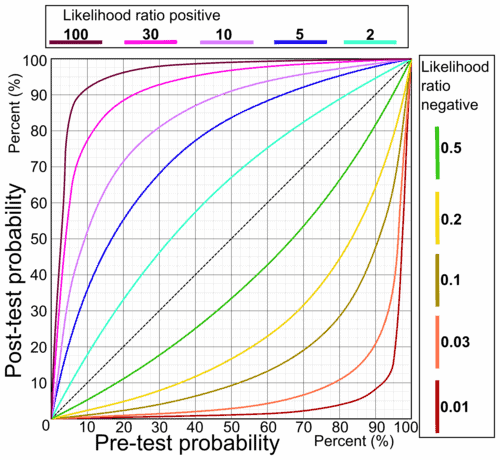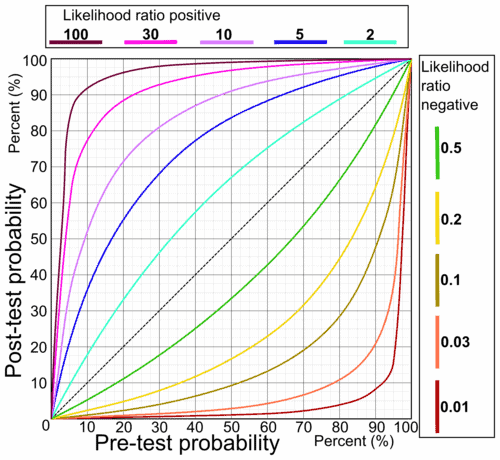如果你也在 怎样代写数论Number theory 个学科遇到相关的难题,请随时右上角联系我们的24/7代写客服。数论Number theory(或旧时的算术或高等算术)是纯数学的一个分支,主要致力于研究整数和整数值的函数。德国数学家卡尔-弗里德里希-高斯(1777-1855)说:”数学是科学的女王–数论是数学的女王。”数论家研究素数以及由整数组成的数学对象(例如有理数)或定义为整数的概括(例如代数整数)的属性。
数论Number theory整数既可以被视为本身,也可以被视为方程的解(刁藩几何)。数论中的问题通常最好通过研究分析对象(例如黎曼Zeta函数)来理解,这些对象以某种方式编码整数、素数或其他数论对象的属性(分析数论)。人们也可以研究实数与有理数的关系,例如,由后者逼近的实数(Diophantine逼近)。
statistics-lab™ 为您的留学生涯保驾护航 在代写数论number theory方面已经树立了自己的口碑, 保证靠谱, 高质且原创的统计Statistics代写服务。我们的专家在代写数论number theory代写方面经验极为丰富,各种代写数论number theory相关的作业也就用不着说。
我们提供的数论number theory及其相关学科的代写,服务范围广, 其中包括但不限于:
- Statistical Inference 统计推断
- Statistical Computing 统计计算
- Advanced Probability Theory 高等概率论
- Advanced Mathematical Statistics 高等数理统计学
- (Generalized) Linear Models 广义线性模型
- Statistical Machine Learning 统计机器学习
- Longitudinal Data Analysis 纵向数据分析
- Foundations of Data Science 数据科学基础

数学代写|数论作业代写number theory代考|Bertrand’s Postulate
One of the most famous results concerning the distribution of primes is known as Bertrand’s postulate, though it is in fact a theorem. In 1845 , Joseph Bertrand conjectured that for any natural number $n$ there is a prime greater than $n$ but no larger than $2 n$. Moreover, he verified this conjecture for all integers up to 3000000 .
Bertrand’s postulate was first proved in 1852 by the Russian mathematician Pafnuty Chebyshev. However, the proof we shall present of this theorem is essentially a proof that Paul Erdôs wrote when he was only nineteen, and that was published in his very first mathematical paper in 1932. Erdös would eventually write more than fifteen hundred mathematical papers; this is more than anyone has written since Euler.
Theorem 10.1 (Bertrand’s postulate). For every integer $n>1$, there is $a$ prime p such that
$$
n2$ is a nonprime real number, we can let $q$ be the largest prime less than $x$. Then $\prod_{p \leq x} p=\prod_{p \leq q} p<4^{q-1}<4^{x-1}$.
We now use induction to prove the claim for prime values of $x$. The first prime value is $x=2$ and in this case the claim is correct since $2<4$. Next, assume $x=2 m+1$ is a prime greater than 2 and that the claim is true for all prime values less than $x$. The idea will be to split the product $\prod_{p \leq 2 m+1} p$ into two products, $\prod_{p \leq m+1} p$ and $\prod_{m+1<p \leq 2 m+1} p$.
Since $m+1<x=2 m+1$ we can use induction to handle the first product by taking the largest prime $q \leq m+1$. Thus
$$
\prod_{p \leq m+1} p=\prod_{p \leq q} p<4^{q-1} \leq 4^{(m+1)-1}=4^m .
$$
The second product takes a bit more effort. First, we observe that
$$
\prod_{m+1<p \leq 2 m+1} p \leq \frac{(2 m+1) !}{m !(m+1) !}=\left(\begin{array}{c}
2 m+1 \
m
\end{array}\right)
$$
because all the primes in the interval $m+1<p \leq 2 m+1$ appear in the numerator but not in the denominator of this fraction. Next, recall from Problem 5.37 the property of Pascal’s triangle that the sum of the binomial coefficients in the $n$th row is $2^n$; thus
$$
\left(\begin{array}{c}
2 m+1 \
0
\end{array}\right)+\cdots+\left(\begin{array}{c}
2 m+1 \
m
\end{array}\right)+\left(\begin{array}{c}
2 m+1 \
m+1
\end{array}\right)+\cdots+\left(\begin{array}{c}
2 m+1 \
2 m+1
\end{array}\right)=2^{2 m+1}
$$
But, in this case, the two middle terms, $\left(\begin{array}{c}2 m+1 \ m\end{array}\right)$ and $\left(\begin{array}{c}2 m+1 \ m+1\end{array}\right)$, are not only the largest terms in this row of Pascal’s triangle, they are equal! Therefore, $2\left(\begin{array}{c}2 m+1 \ m\end{array}\right)<2^{2 m+1}$, and so, $\left(\begin{array}{c}2 m+1 \ m\end{array}\right)<2^{2 m}=4^m$. We conclude that our second product
$$
\prod_{m+1<p \leq 2 m+1} p \leq\left(\begin{array}{c}
2 m+1 \
m
\end{array}\right)<4^m
$$
Now, putting these two products back together, we see that, for $x=$ $2 m+1$
$$
\prod_{p \leq x} p=\prod_{p \leq 2 m+1} p<4^m \cdot 4^m=4^{2 m}=4^{x-1}
$$
数学代写|数论作业代写number theory代考|Goldbach’s Conjecture
The regular correspondence that took place between Euler and Christian Goldbach was mentioned twice in Chapter 7, a 1729 letter in which Goldbach asked Euler about Fermat primes, and a 1753 letter in which Euler discussed Fermat’s last theorem. But no letter in their vast correspondence is nearly as famous as the one Goldbach wrote to Euler-then living in Berlin-on June 7, 1742.
In this letter he asked Euler (in a margin, no less) whether every integer greater than 2 is the sum of three primes. At this time, Goldbach considered 1 a prime, so he would write, for example, $4=1+1+2$, and consider this to be a sum of three primes. Euler wrote back (in the rather strange mixture of German and Latin that was typical of their letters during this period) reminding Goldbach of earlier communication during which they had discussed a variation of this conjecture: every even integer is the sum of two primes. Again, Euler would have thought of $2=1+1$ as a sum of two primes. In Problem 10.17 you are asked to show that these two variations of Goldbach’s question are equivalent.
So, since Goldbach’s original question just boils down to the question of whether even integers greater than 2 are always a sum of two primes, we now state Goldbach’s conjecture formally as:
Every even integer greater than 2 can be written as the sum of two primes.
Euler was quite confident that this conjecture is true even though he had no idea how to prove it. Even today it is considered one of the most difficult problems in mathematics. The publishers Faber and Faber offered $\$ 1,000,000$ between March 20, 2000, and March 20, 2002 , for a proof of Goldbach’s conjecture as a publicity gimmick when they launched a novel by mathematician Apostolos Doxiadis, Uncle Petros and Goldbach’s Conjecture. Needless to say, their money was safe, although there is a massive amount of evidence supporting this conjecture. All even numbers have been checked up to 4000000000000000000.
It turns out that, like a good number of other things in mathematics, Goldbach’s conjecture is not even named for the right person; Descartes thought of this same question well before Goldbach and Euler did. Paul Erdôs, however, took the position that in the grand scheme of things this particular case of misnaming was not such a bad thing, for, as he was fond of saying: “Mathematically speaking, Descartes was infinitely rich and Goldbach was very poor.”

数论作业代写
数学代写|数论作业代写number theory代考|Bertrand’s Postulate
关于素数分布的最著名的结果之一被称为伯特兰公设,尽管它实际上是一个定理。1845年,约瑟夫·伯特兰(Joseph Bertrand)推测,对于任何自然数,都存在一个大于n但不大于2n的素数。此外,他还对3000000以内的所有整数验证了这个猜想。
1852年,俄国数学家帕夫努提·切比雪夫首次证明了伯特兰公设。然而,我们要给出的这个定理的证明,本质上是保罗Erdôs在他只有19岁的时候写的,并在1932年发表在他的第一篇数学论文中。Erdös最终写了1500多篇数学论文;这比欧拉之后任何人写的都多。
定理10.1(伯特兰公设)。对于每一个整数n>1,存在a ‘ p满足
$ $
N2是一个非素数实数,我们可以设q是小于x的最大素数。那么美元\ prod_ {p \ leq x} p = \ prod_ {p \ leq} p < 4 ^ {q1} < 4 ^ {x – 1} $。
现在我们用归纳法来证明x的素数。第一个素数值是$x=2$,在这种情况下,断言是正确的,因为$2<4$。接下来,假设$x= 2m +1$是一个大于2的素数,并且对于所有小于$x$的素数都成立。我们的想法是将产品$\prod_{p \leq 2m +1} p$拆分为两个产品,$\prod_{p \leq m+1} p$和$\prod_{m+1<p \leq 2m +1} p$。
由于$m+1<x=2 m+1$,我们可以通过取最大素数$q \leq m+1$来使用归纳法处理第一个乘积。因此
$$
\prod_{p \leq m+1} p=\prod_{p \leq q} p<4^{q-1} \leq 4^{(m+1)-1}=4^m .
$$
第二个产品需要更多的努力。首先,我们观察到
$$
\prod_{m+1<p \leq 2 m+1} p \leq \frac{(2 m+1) !}{m !(m+1) !}=\left(\begin{array}{c}
2 m+1 \
m
\end{array}\right)
$$
因为在$m+1<p \leq 2 m+1$区间内的所有质数都出现在分子上而不在分母上。接下来,回想一下第5.37题中帕斯卡三角形的性质,即$n$第一行的二项式系数之和为$2^n$;因此
$$
\left(\begin{array}{c}
2 m+1 \
0
\end{array}\right)+\cdots+\left(\begin{array}{c}
2 m+1 \
m
\end{array}\right)+\left(\begin{array}{c}
2 m+1 \
m+1
\end{array}\right)+\cdots+\left(\begin{array}{c}
2 m+1 \
2 m+1
\end{array}\right)=2^{2 m+1}
$$
但是,在这种情况下,中间的两项,$\left(\begin{array}{c}2 m+1 \ m\end{array}\right)$和$\left(\begin{array}{c}2 m+1 \ m+1\end{array}\right)$,不仅是帕斯卡三角形这一行中最大的项,它们是相等的!所以是$2\left(\begin{array}{c}2 m+1 \ m\end{array}\right)<2^{2 m+1}$,所以是$\left(\begin{array}{c}2 m+1 \ m\end{array}\right)<2^{2 m}=4^m$。我们得出结论,我们的第二个产品
$$
\prod_{m+1<p \leq 2 m+1} p \leq\left(\begin{array}{c}
2 m+1 \
m
\end{array}\right)<4^m
$$
现在,把这两个产物放到一起,我们看到 $x=$ $2 m+1$
$$
\prod_{p \leq x} p=\prod_{p \leq 2 m+1} p<4^m \cdot 4^m=4^{2 m}=4^{x-1}
$$
数学代写|数论作业代写number theory代考|Goldbach’s Conjecture
欧拉和哥德巴赫之间的定期通信在第七章中提到了两次,1729年哥德巴赫向欧拉询问费马素数的一封信,以及1753年欧拉讨论费马最后定理的一封信。但是,在他们大量的通信中,没有一封比得上1742年6月7日哥德巴赫写给当时住在柏林的欧拉的那封信。
在这封信中,他问欧拉是否所有大于2的整数都是三个素数的和。此时,哥德巴赫认为1是一个素数,所以他会写,例如,$4=1+1+2$,并认为这是三个素数的和。欧拉回信(用德语和拉丁语的奇怪混合,这是当时他们信件的典型风格)提醒哥德巴赫,他们曾讨论过这个猜想的一个变体:每一个偶数都是两个素数的和。同样,欧拉认为2=1+1是两个素数的和。在10.17题中,要求你们证明哥德巴赫问题的这两种变体是等价的。
因此,既然哥德巴赫最初的问题归结为大于2的偶数是否总是两个素数的和的问题,我们现在将哥德巴赫猜想正式表述为:
每一个大于2的偶数都可以写成两个素数的和。
欧拉对这个猜想很有信心,尽管他不知道如何证明它。即使在今天,它也被认为是数学中最难的问题之一。2000年3月20日至2002年3月20日期间,费伯出版社和费伯出版社悬赏100万美元,作为宣传噱头,出版数学家Apostolos Doxiadis的小说《彼得斯大叔与哥德巴赫猜想》的证明。不用说,他们的钱是安全的,尽管有大量证据支持这一猜测。所有的偶数都被检查到4000000000000000000。
事实证明,就像数学中的许多其他事物一样,哥德巴赫猜想甚至没有以正确的人命名;笛卡尔早在哥德巴赫和欧拉之前就想到了这个问题。然而,保罗Erdôs的立场是,从宏观的角度来看,这个特殊的命名错误并不是一件坏事,因为,正如他喜欢说的那样:“从数学上讲,笛卡尔是无限富有的,而哥德巴赫是非常贫穷的。
统计代写请认准statistics-lab™. statistics-lab™为您的留学生涯保驾护航。
金融工程代写
金融工程是使用数学技术来解决金融问题。金融工程使用计算机科学、统计学、经济学和应用数学领域的工具和知识来解决当前的金融问题,以及设计新的和创新的金融产品。
非参数统计代写
非参数统计指的是一种统计方法,其中不假设数据来自于由少数参数决定的规定模型;这种模型的例子包括正态分布模型和线性回归模型。
广义线性模型代考
广义线性模型(GLM)归属统计学领域,是一种应用灵活的线性回归模型。该模型允许因变量的偏差分布有除了正态分布之外的其它分布。
术语 广义线性模型(GLM)通常是指给定连续和/或分类预测因素的连续响应变量的常规线性回归模型。它包括多元线性回归,以及方差分析和方差分析(仅含固定效应)。
有限元方法代写
有限元方法(FEM)是一种流行的方法,用于数值解决工程和数学建模中出现的微分方程。典型的问题领域包括结构分析、传热、流体流动、质量运输和电磁势等传统领域。
有限元是一种通用的数值方法,用于解决两个或三个空间变量的偏微分方程(即一些边界值问题)。为了解决一个问题,有限元将一个大系统细分为更小、更简单的部分,称为有限元。这是通过在空间维度上的特定空间离散化来实现的,它是通过构建对象的网格来实现的:用于求解的数值域,它有有限数量的点。边界值问题的有限元方法表述最终导致一个代数方程组。该方法在域上对未知函数进行逼近。[1] 然后将模拟这些有限元的简单方程组合成一个更大的方程系统,以模拟整个问题。然后,有限元通过变化微积分使相关的误差函数最小化来逼近一个解决方案。
tatistics-lab作为专业的留学生服务机构,多年来已为美国、英国、加拿大、澳洲等留学热门地的学生提供专业的学术服务,包括但不限于Essay代写,Assignment代写,Dissertation代写,Report代写,小组作业代写,Proposal代写,Paper代写,Presentation代写,计算机作业代写,论文修改和润色,网课代做,exam代考等等。写作范围涵盖高中,本科,研究生等海外留学全阶段,辐射金融,经济学,会计学,审计学,管理学等全球99%专业科目。写作团队既有专业英语母语作者,也有海外名校硕博留学生,每位写作老师都拥有过硬的语言能力,专业的学科背景和学术写作经验。我们承诺100%原创,100%专业,100%准时,100%满意。
随机分析代写
随机微积分是数学的一个分支,对随机过程进行操作。它允许为随机过程的积分定义一个关于随机过程的一致的积分理论。这个领域是由日本数学家伊藤清在第二次世界大战期间创建并开始的。
时间序列分析代写
随机过程,是依赖于参数的一组随机变量的全体,参数通常是时间。 随机变量是随机现象的数量表现,其时间序列是一组按照时间发生先后顺序进行排列的数据点序列。通常一组时间序列的时间间隔为一恒定值(如1秒,5分钟,12小时,7天,1年),因此时间序列可以作为离散时间数据进行分析处理。研究时间序列数据的意义在于现实中,往往需要研究某个事物其随时间发展变化的规律。这就需要通过研究该事物过去发展的历史记录,以得到其自身发展的规律。
回归分析代写
多元回归分析渐进(Multiple Regression Analysis Asymptotics)属于计量经济学领域,主要是一种数学上的统计分析方法,可以分析复杂情况下各影响因素的数学关系,在自然科学、社会和经济学等多个领域内应用广泛。
MATLAB代写
MATLAB 是一种用于技术计算的高性能语言。它将计算、可视化和编程集成在一个易于使用的环境中,其中问题和解决方案以熟悉的数学符号表示。典型用途包括:数学和计算算法开发建模、仿真和原型制作数据分析、探索和可视化科学和工程图形应用程序开发,包括图形用户界面构建MATLAB 是一个交互式系统,其基本数据元素是一个不需要维度的数组。这使您可以解决许多技术计算问题,尤其是那些具有矩阵和向量公式的问题,而只需用 C 或 Fortran 等标量非交互式语言编写程序所需的时间的一小部分。MATLAB 名称代表矩阵实验室。MATLAB 最初的编写目的是提供对由 LINPACK 和 EISPACK 项目开发的矩阵软件的轻松访问,这两个项目共同代表了矩阵计算软件的最新技术。MATLAB 经过多年的发展,得到了许多用户的投入。在大学环境中,它是数学、工程和科学入门和高级课程的标准教学工具。在工业领域,MATLAB 是高效研究、开发和分析的首选工具。MATLAB 具有一系列称为工具箱的特定于应用程序的解决方案。对于大多数 MATLAB 用户来说非常重要,工具箱允许您学习和应用专业技术。工具箱是 MATLAB 函数(M 文件)的综合集合,可扩展 MATLAB 环境以解决特定类别的问题。可用工具箱的领域包括信号处理、控制系统、神经网络、模糊逻辑、小波、仿真等。

